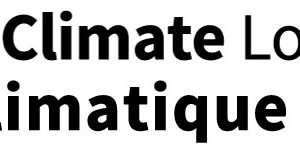The Paris Climate Agreement: The glass is both half empty and half full After nearly two decades of international negotiations, The Paris Agreement formally adopted on Saturday, December 12, 2015 set into motion an ambitious global process of accelerated climate action to avoid dangerous anthropogenic interference with the global climate system. “This is truly a historic moment,” the United Nations secretary general, Ban Ki-moon said. “For the first time, we have a truly universal agreement on climate change, one of the most crucial problems on earth.” At long last Canada is back on the right side of global climate action after receiving a Lifetime Unachievement Award for climate inaction in 2013. Canada’s delegation in Paris included most of our Premiers, our Prime Minister, Opposition leaders and Indigenous leadership. Our Environment Minister, Catherine McKenna was invited to negotiate the final details of the Paris Agreement. Prime Minister Justin Trudeau declared, “Canadians can be proud of the strong and positive role we played during these very important international negotiations to address one of the biggest challenges of our generation,” he said. “There is much tough work that still needs to be accomplished both at home and around the world to implement the agreement.” The most promising aspect of the global agreement is found in Article 2: “to pursue efforts to limit the temperature increase to 1.5 degrees C above preindustrial levels” – which is a huge leap from the 2 oC limit set at the 2009 climate talks in Copenhagen. However, four facts must kept in mind: Dr. James Hansen, a world-leading climatologist and former director of the NASA Goddard Institute of Space Studies, yesterday expressed his concern, “‘We’ll have a 2 oC warming target and then try to do a little better every five years.’ It’s just worthless words. There is no action, just promises. As long as fossil fuels appear to be the cheapest fuels out there, they will be continue to be burned.” Dr. Hansen is eluding to the need for carbon pricing policy that can easily be adopted internationally. On December 13, 2015 he called on President Obama to support a national carbon tax. Bill McKibben (350.org) stated that, “The world’s governments have now announced their intentions. And so the rest of us can hold them to those promises, or at least try. “What, you want to build a pipeline? I thought you were going to go for 1.5 degrees. You want to frack? Are you fracking kidding me? You said you were going for 2 degrees at the absolute worst.” PM Trudeau has promised to meet with the premiers within the next 90 days. Canada went to Paris with deeply inadequate commitments. There is a hodgepodge of provincial carbon pricing policies and commitments from provinces that must be woven together. On Monday, November 30, both Citizens’ Climate Lobby and the Government of Canada joined a global coalition of leaders and strategic partners to launch the Carbon Pricing Leadership Coalition—a new policy-design framework where governments, intergovernmental organizations, nongovernmental organizations, and businesses, including some of the world’s largest oil companies and institutional investors, work together as peers. The mission is to build effective, efficient, equitable carbon pricing into all national climate strategies by 2020. Part of Canada’s commitments at the global climate talks was to stand up for Indigenous Rights. Thus, it must be noted the following was stated by the International Indigenous Environmental Network at the end of the Paris talks: “The Paris accord is a trade agreement, nothing more. It promises to privatize, commodify and sell forested lands as carbon offsets in fraudulent schemes such as REDD+ projects. These offset schemes provide a financial laundering mechanism for developed countries to launder their carbon pollution on the backs of the global south. Case-in-point, the United States’ climate change plan includes 250 million megatons to be absorbed by oceans and forest offset markets. Essentially, those responsible for the climate crisis not only get to buy their way out of compliance but they also get to profit from it as well.” – Alberto Saldamando, Human Rights Expert & Attorney. Note Canada’s current commitments also include offsetting carbon emissions. Cathy Orlando, National Manager of Citizens’ Climate Lobby in Canada sees the glass as being both half empty and half full. “When viewed through the lenses of international cooperation and historic moments, December 12, 2015 was an auspicious day for the climate. When viewed from the lenses of scientific rigour, political will and real deeds, it is clear we have a lot of work ahead of us. What is needed in Canada and by extension the world, is an overarching national carbon pricing policy that can be easily adopted internationally. Carbon fee and dividend is that policy.” Citizens’ Climate Lobby is an international non-partisan organization that has been lobbying for a national revenue-neutral carbon tax, called carbon fee and dividend, since 2010 in Canada and the USA. ########
MEDIA RELEASE: December 13, 2015
Contact: Cathy Orlando cathy@citizensclimatelobby.org 705-929-4043
The Paris Climate Agreement:
Home » CCL Canada News » The Paris Climate Agreement:











